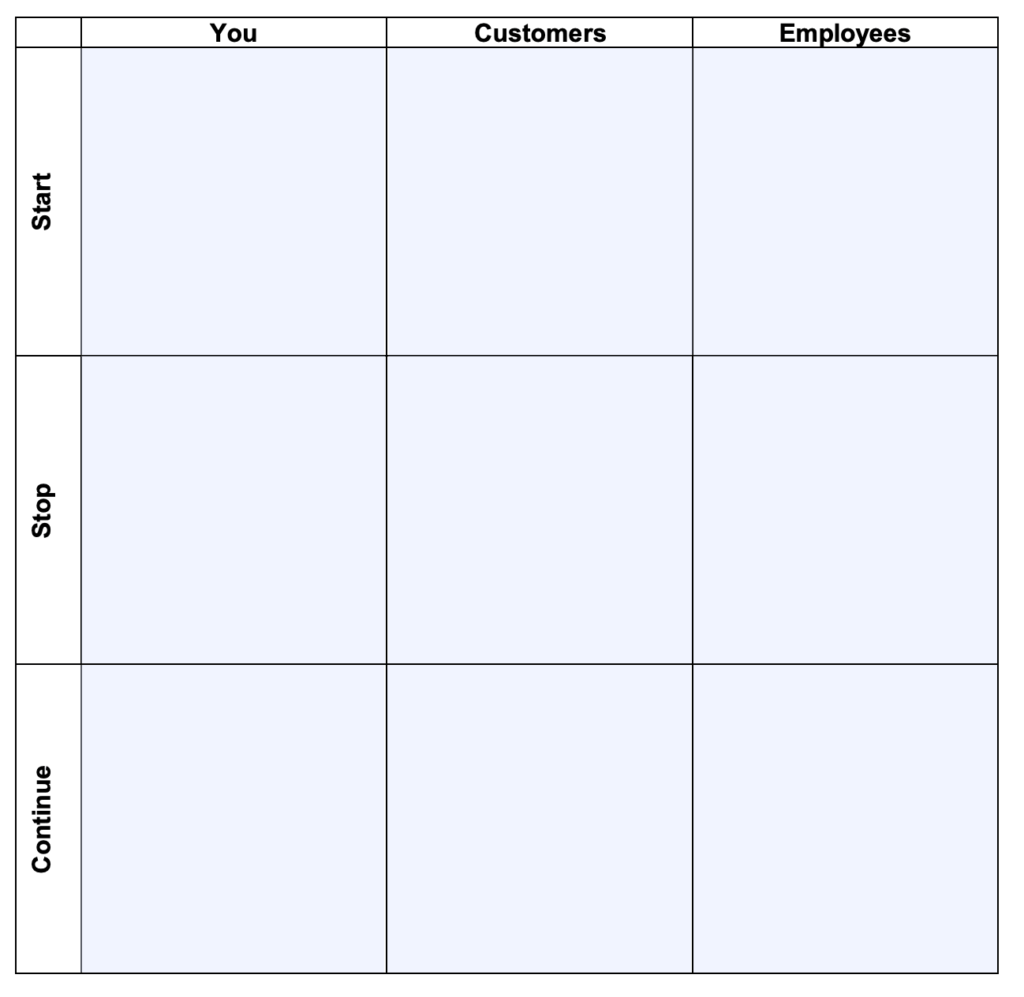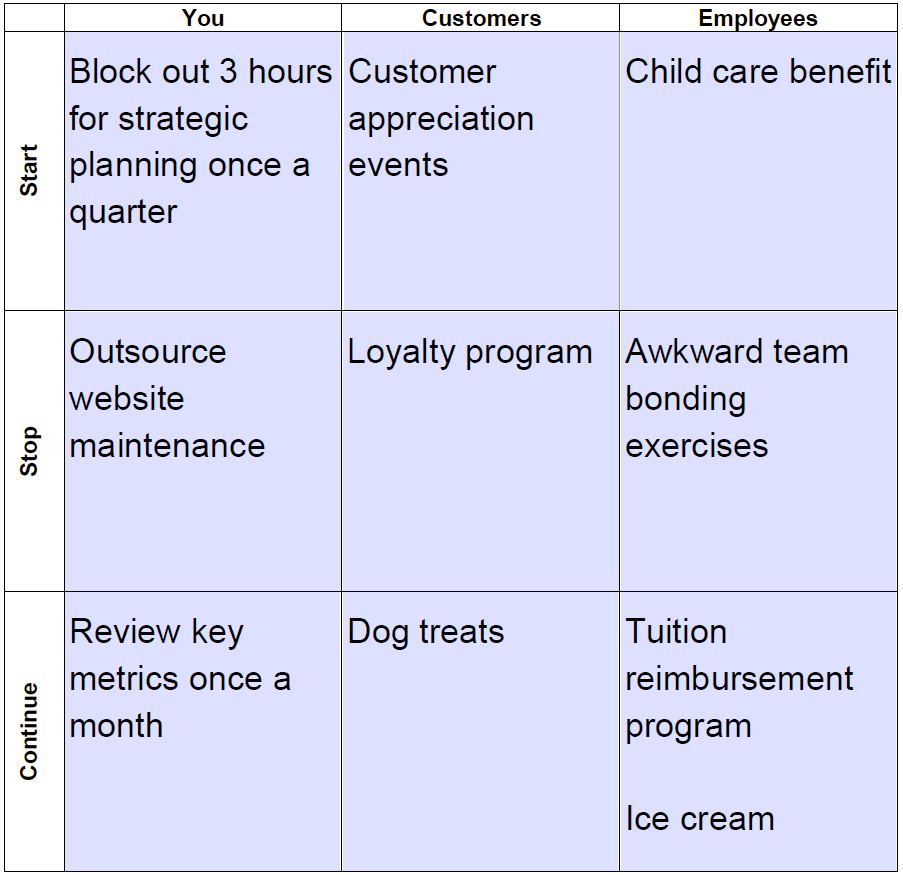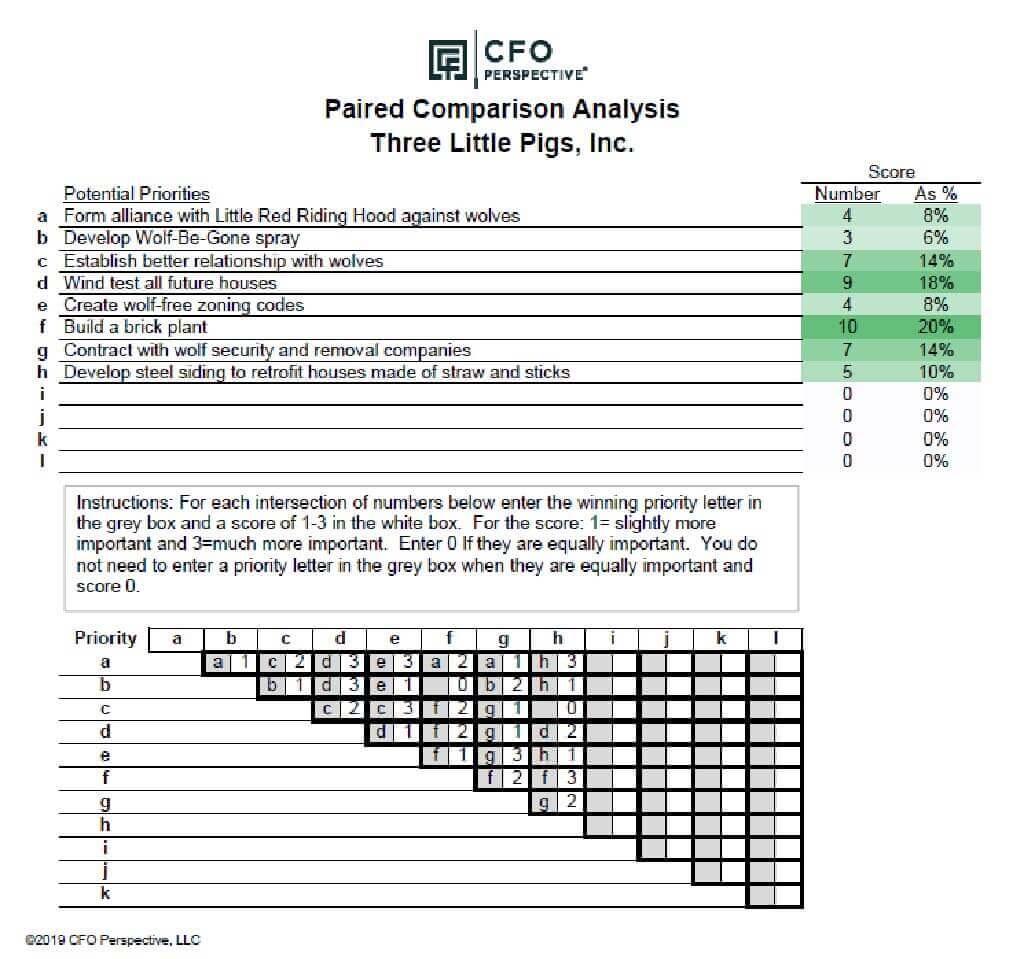Feedback is important to running a successful business. After all, it lets people better understand their current performance and identify ways to improve. “Once the feedback is given, the employee learns [more efficient ways] of doing things,” writes Sara Pollock, the marketing head for ClearCompany. “When the employee begins their new, streamlined practice, they will then improve their work performance, which in turn improves the company.”
But, not everybody is good at giving (or receiving) feedback. Fortunately, there’s a simple team exercise you can conduct that will help you overcome these challenges. It’s called Start Stop Continue.
What is Start Stop Continue?
Start Stop Continue is an intuitive framework that lets you collect feedback on three aspects:
- What you should start doing;
- What you should stop doing; and
- What you should continue doing.
This approach not only encourages people to rate the company or a teammate’s performance, but it also lets one provide the reasoning behind those comments. It allows participants to give suggestions, too.
What are the benefits of Start Stop Continue?
This exercise has a ton of benefits, depending on who’s in the spotlight. For example, Start Stop Continue can help event planners figure out what worked in previous events and what didn’t. Operations managers, on the other hand, comprise one of the select types of business careers that manage several departments. They might handle PTO requests, provide routine customer service, or even help with the company budget. With so many responsibilities, Start Stop Continue can teach them to only focus on tasks that will help their business the most.
This approach can also be used to assess the company as a whole, which could prove useful for smaller businesses.
Plus, the Start Stop Continue template ensures that all feedback received is action-oriented. This allows every employee to immediately use it to improve. Since it’s a team exercise, it also gives everyone the opportunity to align their goals based on shared priorities as well.
Start Stop Continue Template
To make things even easier, there’s a Start Stop Continue template below you can follow. Let’s walk you through the process using the template.
The Start Stop Continue Template below is built for business owners and managers. The template gathers input from three sources:
- You – The owner or manager
- Customers
- Employees

Each of these three parties then identifies key actions to:
Start: These can be new projects or products, depending on whose performance you’re assessing.
Stop: These are things that either you or your company should no longer do. They can be better delegated to others, outsourced, or even stopped altogether if they do not serve your company well.
Continue: These are your projects or actions that continue to provide value to others and the company.
Start Stop Continue Examples
Here are Start Stop Continue examples for a retail business owner.
Start
The owner knows that strategic and business planning are important, but they’ve never made them a priority. As such, they’ve decided to start blocking out a couple of hours each quarter to really plan on how to improve their business.
Based on surveys conducted and market information collected, the owner found that customers would like more appreciation events. Therefore, they have decided to plan a couple for the fiscal year.
Their employees have also expressed a need for childcare assistance, so they make plans to start an employer-provided benefit for that.
Stop
The owner has been personally maintaining their website these past few months but found that this isn’t the best use of their time. They make plans to outsource the job instead.
Their business has a referral program, which isn’t doing so well for sales. As such, they’ll stop it.
They have also received feedback from the team that some bonding exercises were too awkward to enjoy. Since the team is gathered for the session, this could be an opportunity to brainstorm ideas.
Continue
Over the past few months, the business owner found that reviewing key metrics helped them grow the business. They will continue to do this.
They’ve recently placed a couple of dog treats and a water bowl outside the store as well, which customers liked. This alone is reason enough to keep them.
Some of their younger employees have also expressed their thanks for the ongoing tuition program. This incentive has also been a huge draw for potential employees. Their employees agree that bonding over ice cream shouldn’t go away, too. These should be continued.
Below is the Start Stop Continue template with the Start Stop Continue examples entered into it:

Here, you can see how Start Stop Continue teaches you to prioritize the things that bring value to yourself, your team, and your company. In fact, these Start Stop Continue examples are part of CFO Perspective’s Creating Value Program, which teaches small business owners how to create value for the company, its customers, and employees.
Which tasks should I prioritize?
After everybody has filled up their Start Stop Continue worksheet, it’s then time to identify which points to prioritize. But with so many of them, how do you know which ones should be done first?
Here are four proven ways to go about this:
- Voting: This is the most common way. Instead of only choosing one option, however, each participant votes on three to five tasks they should prioritize.
- The Matrix: CFO Perspective has developed this matrix that ranks each task based on its importance and ease of implementation.

Your priority should be as follows:
- High importance and high ease;
- High importance and low ease;
- Low importance and high ease;
- Low importance and low ease.
3. Paired comparison analysis: This method scores each task compared to another. A score of “3” means that one option is more important than the other. A score of “0” means that they’re equally important.

4. Weighted scoring: This method works best if you want to score your objectives based on multiple criteria, like immediacy and cost. Rank each of them on a scale of 1 to 5. Those that have more points should be prioritized.
Where to Start with Start Stop Continue
Improvement is the key to successful business growth, which feedback can help with. Start Stop Continue is a quick and easy way to generate a lot of actionable insights and is best done during planning sessions. In my Creating Value Program, I explain how to use it and other tools to increase the value you provide to customers and employees
For more info, check out these topics pages:
Alexis Smith is a freelance writer with a penchant for writing articles on business, marketing, and technology. Her goal is to learn as much as she can about different industries in the hopes that one day she can start her own software business.
